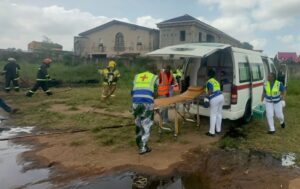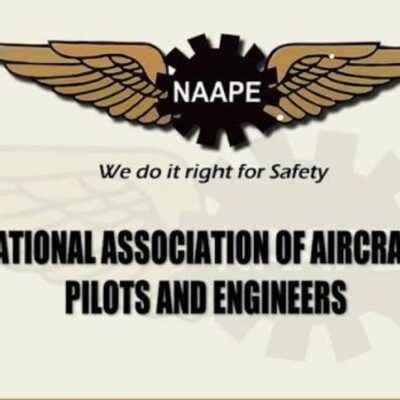
BY OLAPEJU OLUBI
To ensure professional agility and quick response time to emergencies, stakeholders in Nigeria’s aviation sector, on Saturday, carried out a large-scale aeronautical search-and-rescue mock exercise at the Murtala Muhammed International Airport (MMIA), Lagos.
The exercise, coordinated by the Nigerian Airspace Management Agency (NAMA), brought together multiple agencies, including the Federal Airports Authority of Nigeria (FAAN), the Nigerian Civil Aviation Authority (NCAA), the Nigerian Air Force, the National Emergency Management Agency (NEMA), the Lagos State Emergency Management Agency (LASEMA), and other emergency service providers.
Speaking after the exercise, Mr. Abayomi Agoro, the Coordinator of the Search Mission, described the drill as “a critical Aeronautical Search and Rescue Mock Exercise and a significant event in our ongoing commitment to aviation safety and emergency preparedness.”
He stressed that Search and Rescue (SAR) “is not just a statutory responsibility” but a solemn duty to pilots, crew, and passengers.
“Our ability to respond rapidly, accurately, and effectively in the event of an air incident can mean the difference between tragedy and survival,” Agoro said.
He noted that the mock drill was “not merely a drill, it is a simulation of readiness, a practical demonstration of our synergy across multiple agencies.”
The exercise, he added, tested operational plans, communication channels, inter-agency collaboration, and on-ground effectiveness.
Agoro highlighted the broader benefits of the drill, which included gap evaluation, training, and building stakeholder confidence.
“Our goal is zero tolerance for uncoordinated or delayed response in emergency situations.
We must ensure that every distress signal is met with an immediate, intelligent, and well-coordinated action — because lives depend on it,” he said.
The mission coordinator further commended all agencies and participants for their dedication, urging them to “observe critically and provide honest feedback — because the lessons we learn here may someday be the tools that save lives.”
Mr. Zubair Issa, Air Traffic Operations Manager at MMIA, also noted that the exercise exposed important areas for improvement in Nigeria’s search-and-rescue efforts.
“The issue of coordination generally has to do with the tower because the tower is the one that gets information about the aircraft.
The ATC communicates with the pilot, and once an incident occurs, those that are supposed to be on ground must be on ground,” Issa said.
He explained that the military’s involvement in the exercise was to provide security cover and reduce civilian interference during actual rescue operations.
“In the course of the mock exercise, the Air Traffic Control (ATC) was able to contact every agency involved in search and rescue,” Issa added.
The stakeholders agreed that continuous simulation exercises like this are essential for strengthening Nigeria’s aviation safety framework and ensuring that, in the event of a real emergency, response would be swift, coordinated, and effective.
Olapeju is a journalist and aviation reporter.





